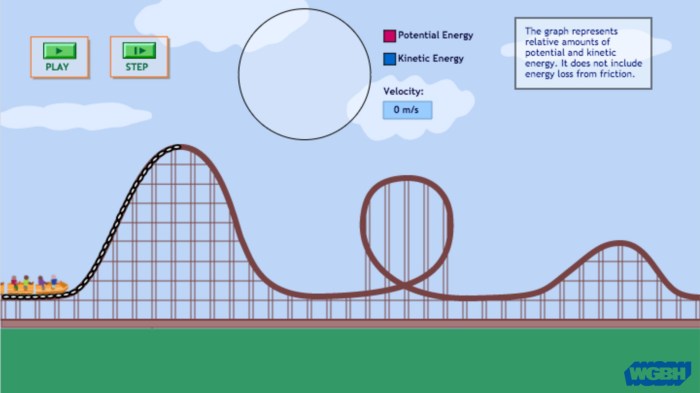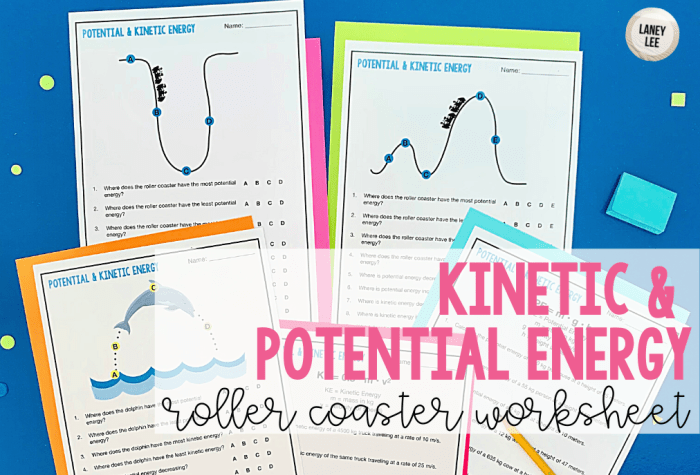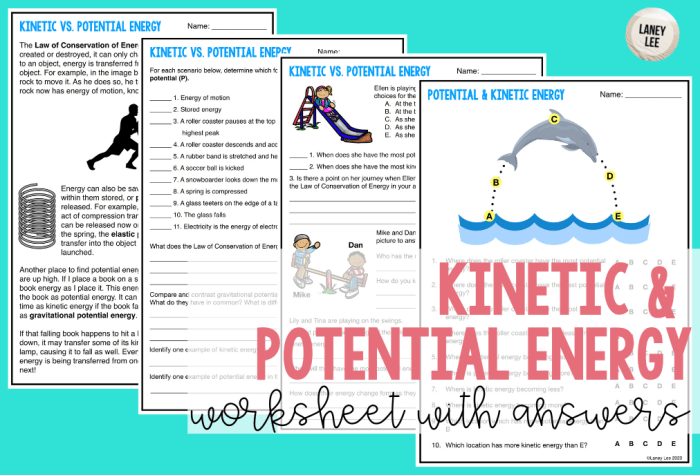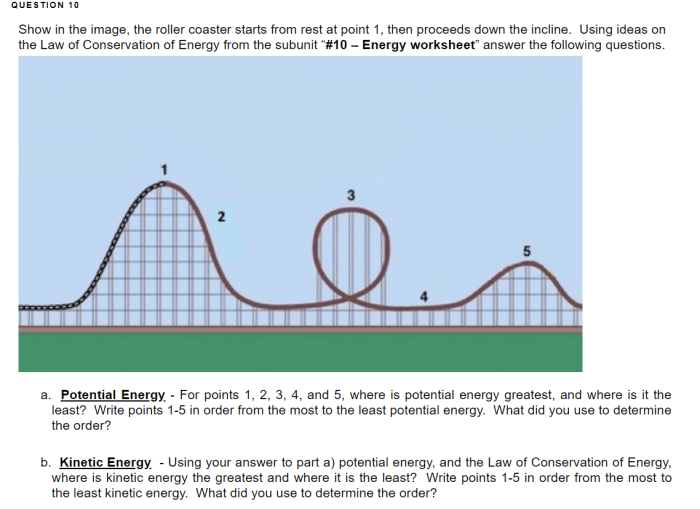Potential and kinetic energy roller coaster worksheet answers unravel the intricate interplay of energy transformations that govern the exhilarating ride of a roller coaster. This comprehensive guide delves into the fundamental concepts of potential and kinetic energy, equipping readers with the knowledge to decipher the dynamics of this captivating amusement park attraction.
As the roller coaster embarks on its journey, potential energy, stored at its peak height, transforms into kinetic energy, propelling it down the slopes. Conversely, as it ascends, kinetic energy is converted back into potential energy, a continuous cycle that fuels the thrilling experience.
Potential and Kinetic Energy in a Roller Coaster: Potential And Kinetic Energy Roller Coaster Worksheet Answers

Roller coasters provide an exciting and educational way to demonstrate the concepts of potential and kinetic energy. This worksheet explores these energy forms as they relate to the motion of a roller coaster.
Potential Energy
Potential energy (PE) is the energy stored in an object due to its position or height. The formula for calculating PE is PE = mgh, where:
- PE is potential energy in joules (J)
- m is the mass of the object in kilograms (kg)
- g is the acceleration due to gravity (9.8 m/s² on Earth)
- h is the height of the object above a reference point in meters (m)
The higher the object is, the greater its potential energy.
On a roller coaster, the highest point of the track has the greatest potential energy because it is the farthest from the ground.
Kinetic Energy
Kinetic energy (KE) is the energy stored in an object due to its motion. The formula for calculating KE is KE = 1/2mv², where:
- KE is kinetic energy in joules (J)
- m is the mass of the object in kilograms (kg)
- v is the velocity of the object in meters per second (m/s)
The faster the object is moving, the greater its kinetic energy.
On a roller coaster, the bottom of the track has the greatest kinetic energy because it is where the coaster is moving the fastest.
Energy Conversion, Potential and kinetic energy roller coaster worksheet answers
As a roller coaster moves, its potential energy is converted into kinetic energy and vice versa. At the top of the track, the coaster has maximum potential energy and zero kinetic energy. As it descends, its potential energy is converted into kinetic energy, which increases until it reaches the bottom of the track.
At the bottom, the coaster has maximum kinetic energy and zero potential energy. The process then reverses as the coaster climbs back up the track.
FAQ Compilation
What is potential energy?
Potential energy is the energy stored within an object due to its position or height.
How does kinetic energy differ from potential energy?
Kinetic energy is the energy an object possesses due to its motion, while potential energy is stored energy due to position or height.
Explain the energy conversion that occurs on a roller coaster.
As the roller coaster climbs, potential energy increases and kinetic energy decreases. Conversely, as it descends, potential energy decreases and kinetic energy increases.


